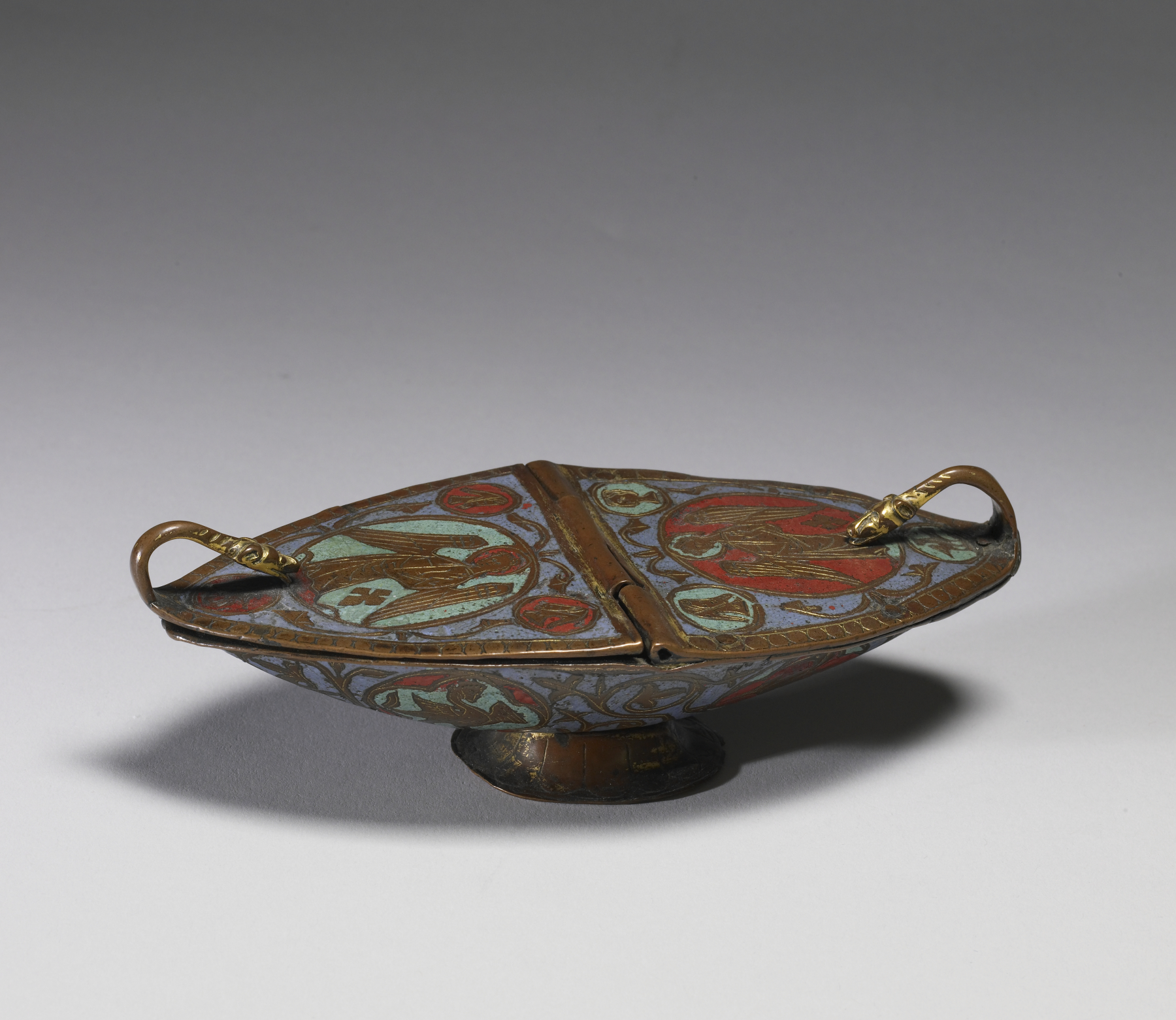Incense Boat
(Medieval Europe )
This incense boat, called a navicula (Latin for "little boat"), was used to store the incense that was burned as part of many church rituals, including the Mass. The boat has curved dragon-headed handles on the lid for the symbolic protection of the incense, a combination of frankincense and myrrh. The burning of incense was considered both an offering to God and an act of purification.
Provenance
Provenance (from the French provenir, 'to come from/forth') is the chronology of the ownership, custody, or location of a historical object. Learn more about provenance at the Walters.
Dimitri Schevitch, Paris, before 1906; Sale, Georges Petit, Paris, April 4-7, 1906, no. 205; Octave Pincot, Paris, 1906, by purchase; Ernst and Martha Kofler-Truniger, Lucerne, 1964, by purchase; Keir Collection (Edmund de Unger), London, 1971, by purchase; Keir Collection Sale, Sotheby's, New York, November 20, 1997, no. 87; Walters Art Museum, 1997, by purchase.
Exhibitions
| 1998-2001 | Highlights from the Collection. The Walters Art Gallery, Baltimore. |
| 1999-2000 | Vive la France! French Treasures from the Middle Ages to Monet. The Walters Art Gallery, Baltimore. |
| 1965 | Mittelalterliche Kunst der Sammlung Kofler-Truniger. Suermondt Museum, Aachen. |
| 1964 | Sammlung E. und M. Kofler-Truniger, Luzern. Kunsthaus Zürich, Zurich. |
| 1981-1982 | Medieval Enamels: Masterpieces from the Keir Collection. The British Museum, London. |
Geographies
France, Limoges (Place of Origin)
Measurements
H: 2 5/16 x W: 3 3/8 x L: 7 3/16 in. (5.9 x 8.6 x 18.2 cm)
Credit Line
Museum purchase with funds provided by the Richard H. Randall, Jr., Memorial Fund and the W. Alton Jones Foundation Acquisition Fund, 1997
Location in Museum
Accession Number
In libraries, galleries, museums, and archives, an accession number is a unique identifier assigned to each object in the collection.
In libraries, galleries, museums, and archives, an accession number is a unique identifier assigned to each object in the collection.
44.701




